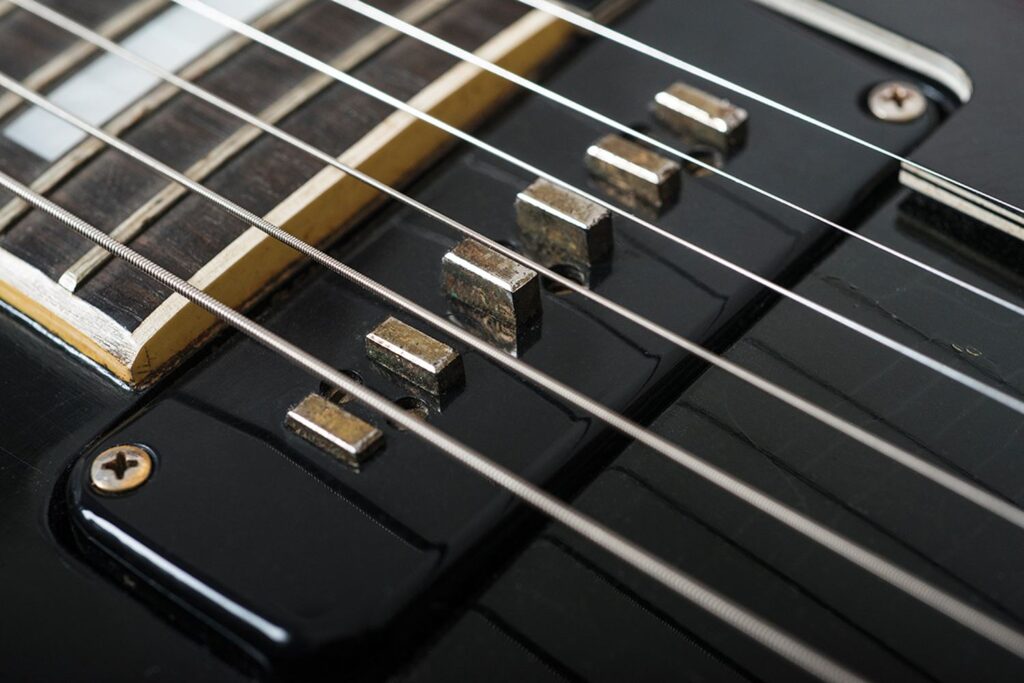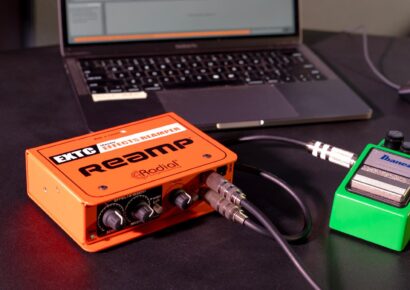Gibson released the Les Paul in 1952, and it was amongst the world’s first mass-produced solid-body electric guitars. The mass produced version was a re-work of Les Paul’s “The Log” an electric that he’d built himself some 10 years or so earlier.
Featuring a crude neck-through centre block and neck section, “The Log” was flanked by two halves of an existing guitar. The body shape was still reminiscent of the archtop hollow-bodies of the time, and the eventual design of the Les Paul would retain a little of that class. The first Gibson Les Paul in 1952 had two P90 pickups, independent volume and tone controls, and a trapeze tailpiece securing the bridge to the bottom strap button.
Gibson Les Paul
As technology and demand grew, as did Les Paul’s constant need for innovation, the Les Paul began to feature things like adjust-o-matic bridges, humbuckers and a short run of Floyd Rose and Kahler equipped Les Paul’s throughout the 80s. The Les Paul Custom would be the flagship model for all of this, with all the classy bells and whistles at Gibson’s disposal.
Read all the latest features, columns and more here.
Les Paul Custom
1953 Custom
1953 saw the introduction of the first Les Paul Custom, varying from the Les Paul (Standard) models of the time with an ebony fretboard, additional binding and a dedicated bridge and stoptail, rather than the bar bridge of the Les Pauls of 1953-1954. The ebony fretboard offset the solid mahogany body nicely, the Customs doing away with the maple cap that adorned the top of most Les Pauls of the era. The ‘54 Custom was double bound, available in a classy ‘Tuxedo’ ebony finish, complete with the split-diamond inlay so closely associated with Gibson today.

The ’53-‘54 featured a P90 pickup in the bridge position, with a variant of the P90 in the neck, and ‘staple’ style magnets. The P90 staple pickup has a more hi-fi sound than a regular ‘screw’ P90 (if hi-fi and P90 can even be used in the same sentence), in that it has extended low end clarity and more headroom. Classic screw-style P90s are fat, warm and break up nicely, and while the staple retains all of this, it also offers a little extra clarity.
1957 Custom
1957 saw the first rush of humbucker-equipped guitars, and the 1957 Les Paul Custom was no different. The Goldtop Les Paul and ‘Black Beauty’ Les Paul Custom featured Seth Lover’s 1955 humbucker design, at that time featuring a ‘Patent Applied For’ sticker before the patent was officially issued in 1959, hailing in a ‘golden age’ of pickups, known as ‘P.A.F.’ pickups today. P.A.F. pickups range from 1956 until 1962. As if the new roaring humbuckers weren’t enough, 1957 saw the introduction of triple-humbucker Les Paul Customs, featuring an extra humbucker in between the neck and bridge positions.
1968 Custom
The start of the 60s was an interesting time for the Les Paul, with the ‘Les Paul’ name shifting to what we now know as the SG. In 1960, the single-cutaway Les Paul was discontinued, along with the Custom, to make way for the newer, double cutaway model that would bear the ‘Les Paul’ name until Paul’s endorsement deal ended in 1963, and the ‘Les Paul’ became the ‘SG’ that we know today.
A few years later, in 1968, we saw the re-introduction of the Les Paul Custom. The mahogany body had been given a maple cap, to brighten it up like its ‘Standard’ associates, the headstock angle had been adjusted to reduce headstock breakage (spoiler alert: they still break), and the four black speed knobs had been replaced by groovy, 60s witch hat knobs.
One year later, Gibson was bought by Norlin, colloquially now known as the “Norlin era” of Gibson — a time of rampant experimentation if nothing else.
‘Norlin-era’ onwards
1969 saw the first models under Norlin’s instruction released to market, doing away with the solid mahogany for a lighter three-piece body, two pieces of mahogany with a sliver of maple about the thickness of a pancake between them, referred to as ‘pancake bodies’. The mahogany necks were three piece from 1975 onwards, but continued being coated in that classic ebony finish, so aesthetically you couldn’t tell if not for the volute that was added for strength to the back of the headstock between 1975 and 1982.
1974 marked 20 years of the Les Paul Custom, inspiring a 20th anniversary Les Paul Custom range that was available in Alpine White, Ebony, Cherry Sunburst, Honey Sunburst and Transparent Red. The late 70s saw the introduction of various finishes including Wine red and more dynamic, flame-y bursts, as well as Silverburst, while the 80s saw the introduction of Kahler tremolos and locking nuts to meet demand for more modern, high performance guitars. Norlin sold Gibson to a group of investors in 1986, and production was moved from Kalamazoo to Nashville.
Since the late 80s and early 90s, the Les Paul Custom has been in and out of production, but always available through the Custom Shop that has been open since 1993. It has represented some of the most forward thinking options available from Gibson, its original inception at the behest of one of the most forward thinking musicians in history: Les Paul himself. The Custom was the best on the market both aesthetically and sonically, often encompassing the changing trends, for better or worse. A classy option for the player who demands the best, the Custom, complete with its iconic split diamond inlay and evolving spec sheet, is a guitar representing Gibson’s history, from different woods, designs, hardware and even ownership. The Custom, despite the premium price tag, is a guitar designed for the player who expects nothing less than the best.
For local enquiries about Gibson Les Pauls, visit Australis.







